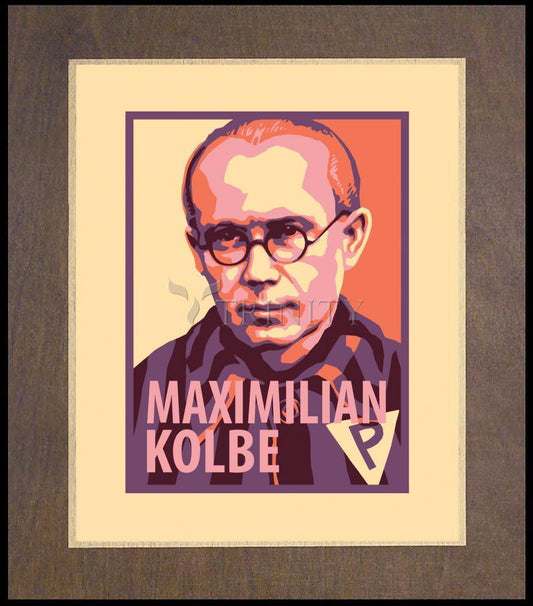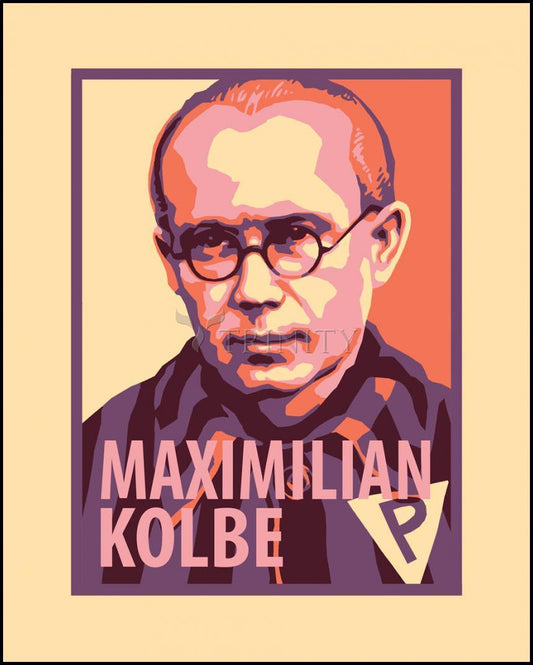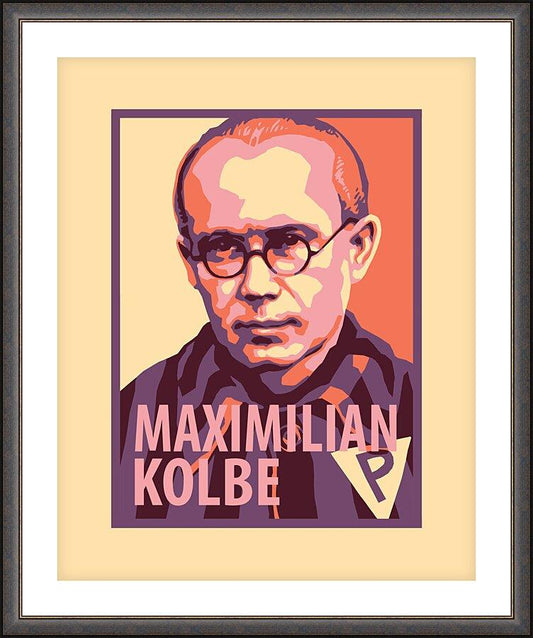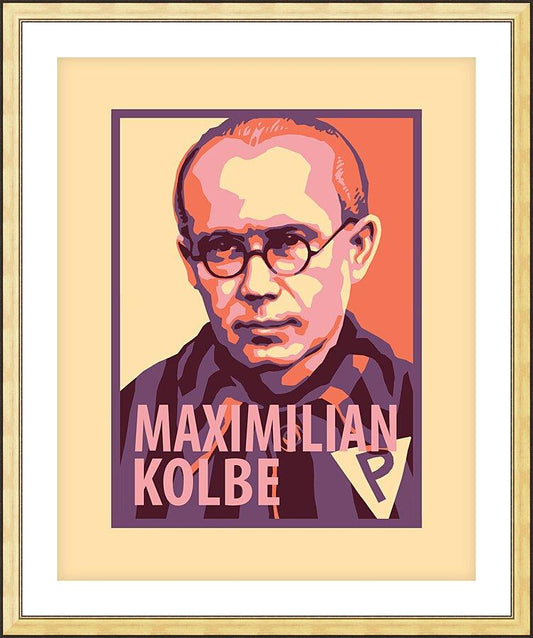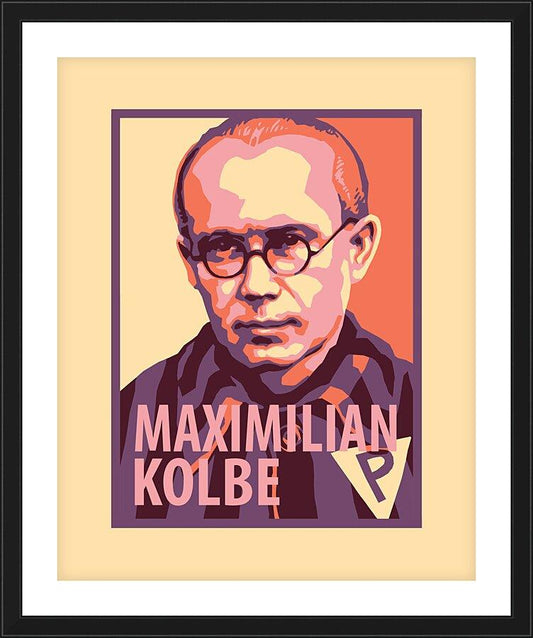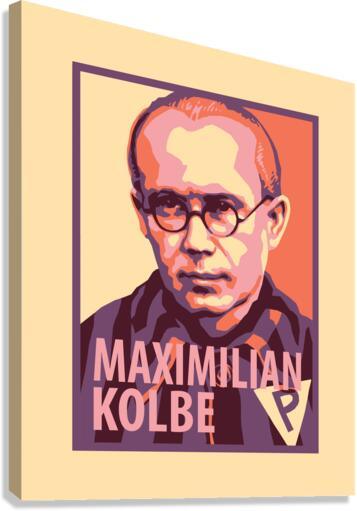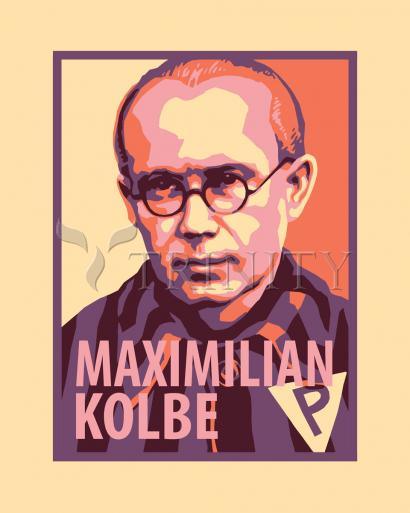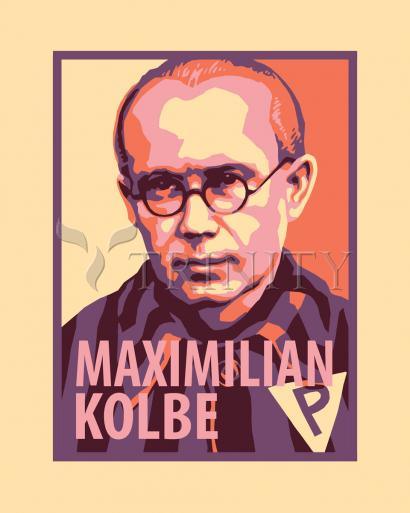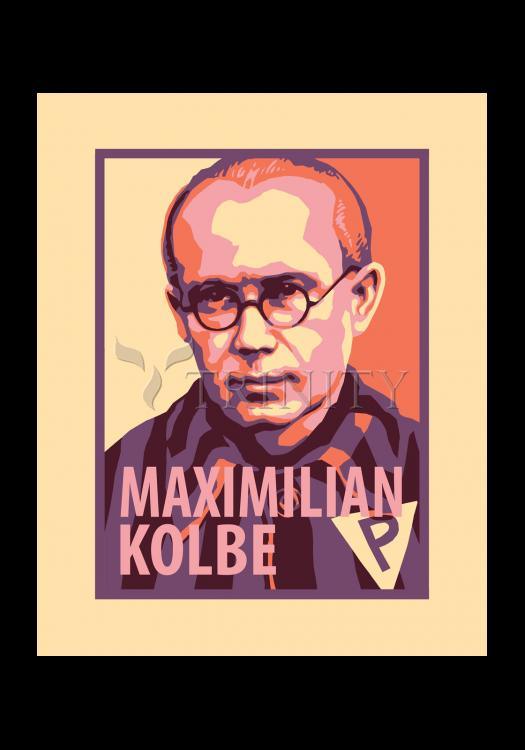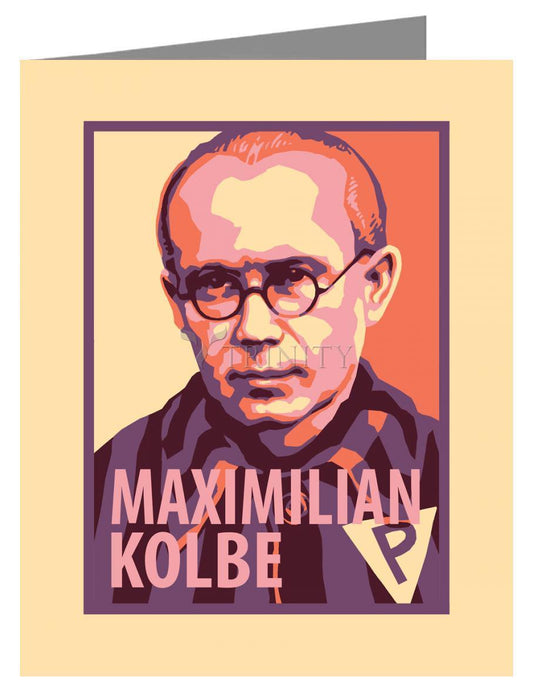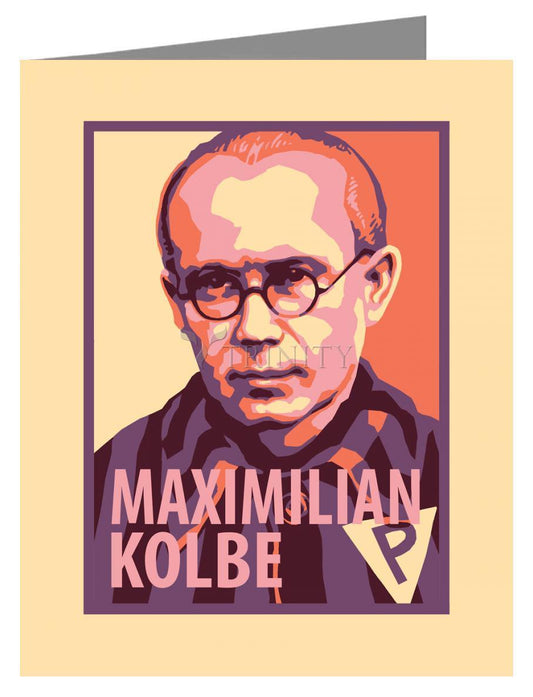His name wasn't always Maximilian. He was born the second son of a poor weaver on 8 January 1894 at Zdunska Wola near Lodz in Poland, and was given the baptismal name of Raymond. Both parents were devout Christians with a particular devotion to Mary. In his infancy, Raymond seems to have been normally mischievous but we are told that one day, after his mother had scolded him for some mischief or other, her words took effect and brought about a radical change in the child's behavior. Later he explained this change. "That night, I asked the Mother of God what was to become of me. Then she came to me holding two crowns, one white, the other red. She asked me if I was willing to accept either of these crowns. The white one meant that I should persevere in purity, and the red that I should become a martyr. I said that I would accept them both." Thus early did the child believe and accept that he was destined for martyrdom. His belief in his dream colored all his future actions.
In 1907, Raymond and his elder brother entered a junior Franciscan seminary in Lwow. Here he excelled in mathematics and physics and his teachers predicted a brilliant future for him in science. Others, seeing his passionate interest in all things military, saw in him a future strategist. For a time indeed, his interest in military affairs together with his fiery patriotism made him lose interest in the idea of becoming a priest. The fulfilment of his dream would lie in saving Poland from her oppressors as a soldier. But before he could tell anyone about his decision his mother announced that, as all their children were now in seminaries, she and her husband intended to enter religious life. Raymond hadn't the heart to upset his parents' plans and so he abandoned his plans for joining the army. He was received as a novice in September 1910 and with the habit he took the new name of Maximilian. From 1912 to 1915, he was in Rome studying philosophy at the Gregorian College, and from 1915 to 1919 theology at the Collegio Serafico. He was ordained in Rome on 28 April 1918.
The love of fighting didn't leave him, but while he was in Rome he stopped seeing the struggle as a military one. He didn't like what he saw of the world, in fact he saw it as downright evil. The fight, he decided, was a spiritual one. The world was bigger than Poland and there were worse slaveries than earthly ones. The fight was still on, but he would not be waging it with the sword. At that time, many Catholics in Europe regarded freemasonry as their chief enemy; and it was against the freemasons that Maximilian Kolbe began to wage war. On 16 October 1917, with six companions, he founded the Crusade of Mary Immaculate (Militia Immaculatae), with the aim of "converting sinners, heretics and schismatics, particularly freemasons, and bringing all men to love Mary Immaculate".
As he entered what was to be the most creative period of his life, Fr Maximilian's health had already begun to deteriorate. He was by now in an advanced state of tuberculosis, and he felt himself overshadowed by death. His love for Mary Immaculate now became the devouring characteristic of his life. He regarded himself as no more than an instrument of her will, and the only time he was known to lose his temper was in defense of her honor. It was for her that he strove to develop all the good that was in him, and he wanted to encourage others to do the same.
When Maximilian returned to Poland in 1919, he rejoiced to see his country free once again, a liberation which he attributed to Mary Immaculate. Pius XI, in response to a request from the Polish bishops, had just promulgated the Feast of Our Lady, Queen of Poland, and Fr Maximilian wrote: "She must be the Queen of Poland of every Polish heart. We must labor to win each and every heart for her." He set himself to extend the influence of his Crusade, and formed cells and circles all over Poland. The doctors had by now pronounced him incurable; one lung had collapsed and the other was damaged. Yet it was now that he flung himself into a whirlwind of activity. In January 1922, he began to publish a monthly review, the Knight of the Immaculate, in Krakow. Its aim was to "illuminate the truth and show the true way to happiness". As funds were low, only 5,000 copies of the first issue were printed. In 1922, he removed to another friary in Grodno and acquired a small printing establishment; and from now on the review began to grow. In 1927, 70,000 copies were being printed. The Grodno Friary became too small to house such a mammoth operation, so Fr Maximilian began to look for a site nearer to Warsaw. Prince Jan Drucko-Lubecki offered him some land at Teresin, west of Warsaw, Fr Maximilian promptly erected a statue of Mary Immaculate there, and the monks began the arduous work of construction.
On 21 November 1927, the Franciscans moved from Grodno to Teresin and on 8 December, the friary was consecrated and was given the name of Niepokalanow, the City of the Immaculate. "Niepokalanow", said Fr Maximilian, "is a place chosen by Mary Immaculate and is exclusively dedicated to spreading her cult. All that is and will be at Niepokalanow will belong to her. The monastic spirit will flourish here; we shall practice obedience and we shall be poor, in the spirit of St Francis."
Born: January 7, 1894 at Zdunska Wola, Poland as Raymond Kolbe
Died: August 14, 1941 by lethal carbonic acid injection after three weeks of starvation and dehydration at the Auschwitz, Poland death camp; body burned in the ovens and ashes scattered
Venerated: January 30, 1969 by Pope Paul VI
Beatified: October 17, 1971 by Pope Paul VI; his beatification miracles include the July 1948 cure of intestinal tuberculosis of Angela Testoni, and August 1950 cure of calcification of the arteries/sclerosis of Francis Ranier
Canonized: October 10, 1982 by Saint John Paul II; declared a martyr of charity



